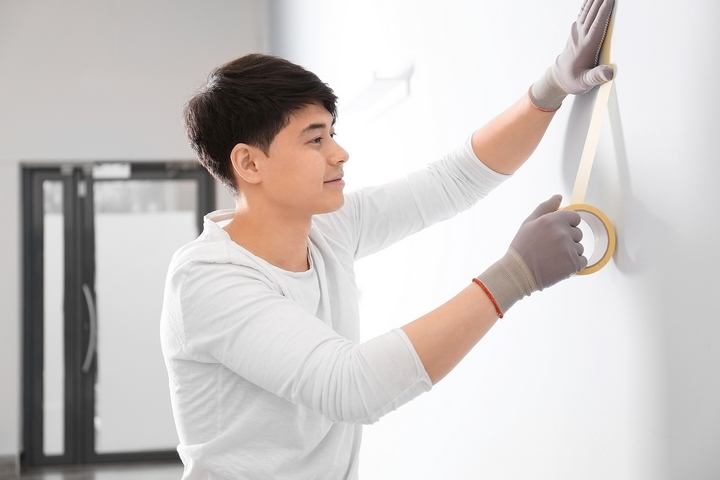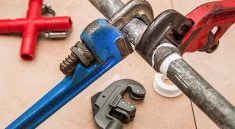You take pride in the look of your home or business, and any damage that occurs stands out like a sore thumb. When there are scuffs, holes or gouges in the walls, it is something you need to take care of right away.
How do you fix the damage to your walls? This is a job you can hire a tradesperson to fix or take on yourself. Let’s go over how to repair a damaged wall.
Inspect Wall Damage
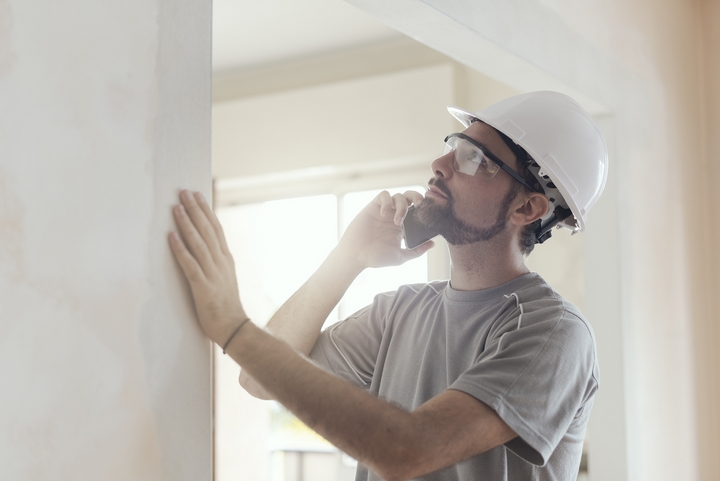
Most walls are made of drywall, and it’s very versatile for covering interior walls, but unfortunately, it’s susceptible to damage.
When you notice a problem with the face of the wall, take a close look at the extent of the damage. Is it a dent or scuff? Is there a hole in the wall? Is the wall wet and mushy? The type of damage will determine how you go about fixing it.
Corner Guards
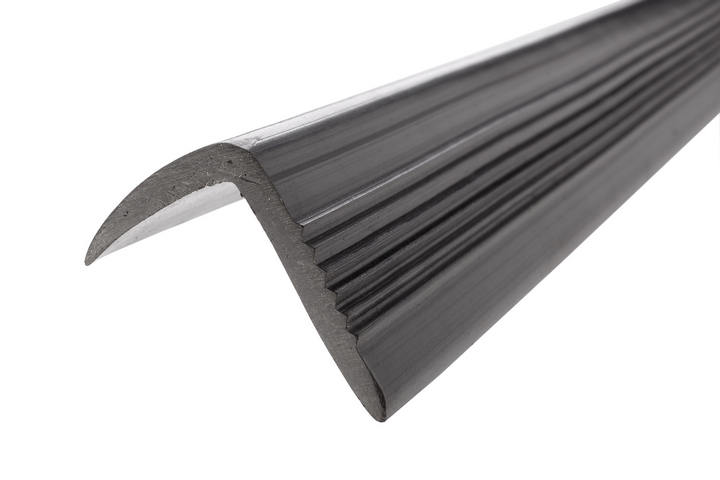
As important as getting your walls repaired, just as important is preventing further damage. Accidents always happen, but contact with them doesn’t have to be damaging if you can protect your walls.
While holes and scuffs can happen anywhere on a wall, corners are especially susceptible. This is also a much bigger job to repair because it doesn’t just require patching a hole but rather taking off the corner bead from the drywall, fixing the damage, putting on a new corner bead and tapping and finishing it. What’s the solution? Corner guards.
Metal corner guards provide strength in this vulnerable area. They can stand up to bumps and impacts without damaging the wall, and because of their design, they transfer the impact along the length of the material. They look really good too. It gives a professional look and feel to your place and allows another trim piece on your wall that adds to the design.
Wall Dents and Scuffs
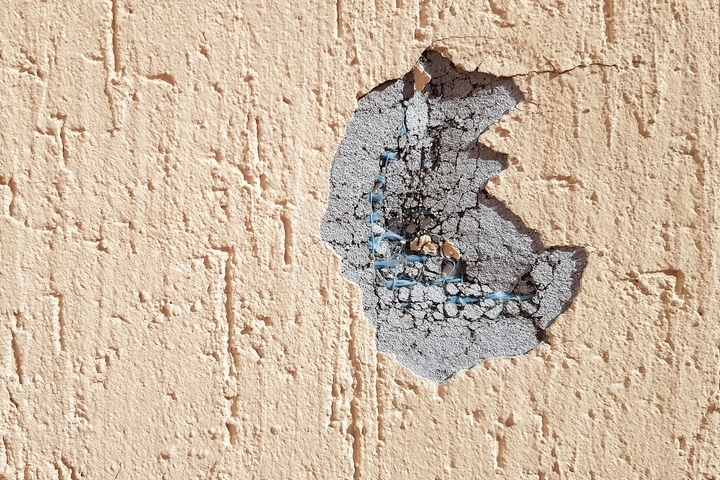
This type of damage is fairly minor and can be fixed without worry. If the dent goes into the drywall superficially, you can probably use drywall mud to fill the area. Feather out the edges to fade into the wall, and after it drys, give it a light sanding.
If the dent is deeper or the drywall is cracked, you can use drywall mesh tape to cover the crack and help hold the mud compound in. The mesh is sticky, so it easily adheres to the drywall. Continue with filling and feathering out the mud and sanding it when dry.
Smaller Holes
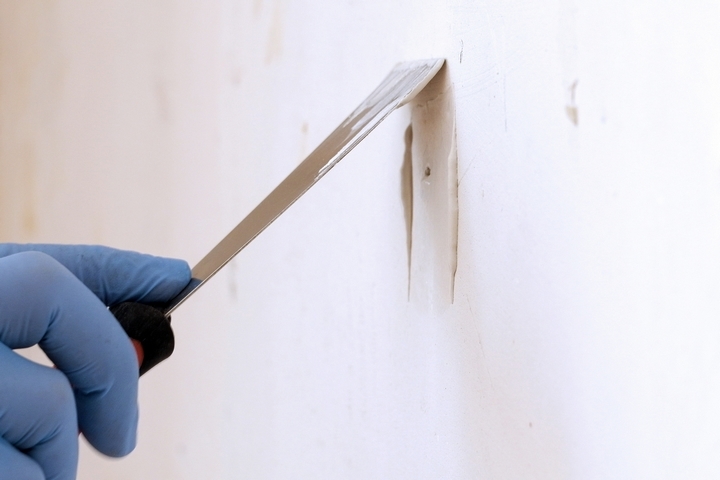
If you have a hole that doesn’t go past the studs on either side, it can be patched up with a smaller piece of drywall. Simply cut a square out beyond the damage and remove it. Make sure it is large enough to reach in backing.
Your backing can be scrap wood or steel stud if you have it. Use some 1×3 or similar and put it inside, overlapping the hole on each side. Drive screws through the drywall to secure the backing and repeat it on the other side. Now measure your new drywall piece and attach it to the exposed backing. Use tape and mud to seal the joints and fill and sand until it blends with the wall.
Larger Wall Holes
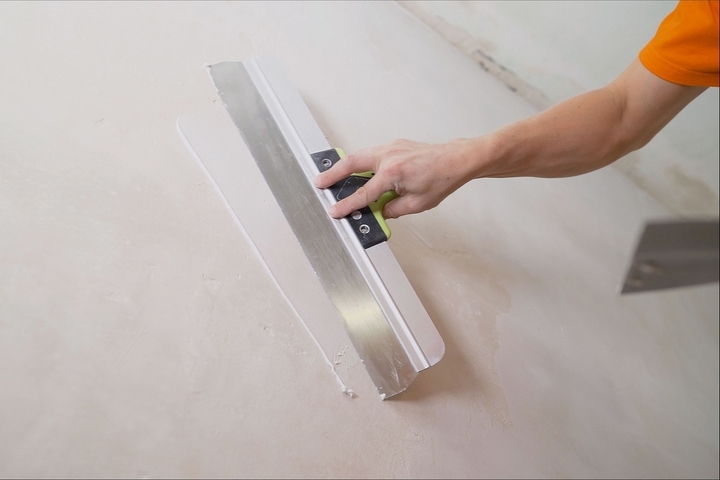
When there is larger damage, you may have a big hole, water damage or cracks that spread out. You may need to remove a larger piece from between two studs. Use a straight edge to cut in the middle of the stud unless this is already a butt edge. Repeat on the other side and cut horizontally to remove the entire piece.
From here, you just need to measure the size of the replacement piece. You don’t need backing because you can use the existing studs to firmly attach the drywall. Repeat your taping and mudding, and finish up with matching paint.
How to Repair Damaged Wall
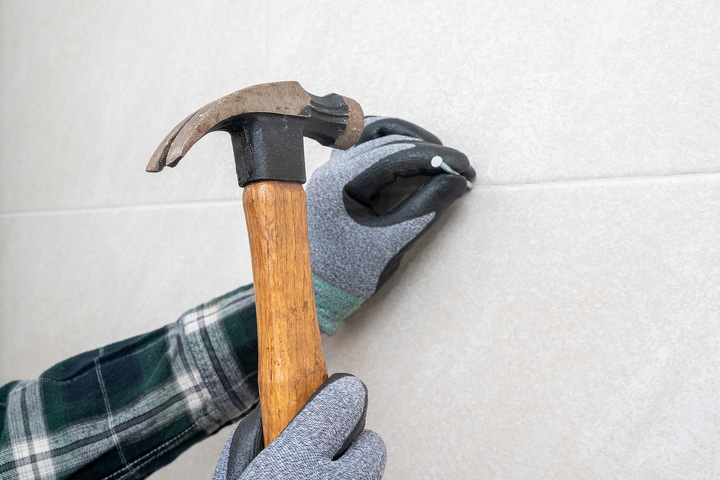
Following this guide, you should be able to repair a damaged wall on your own. After you are done, consider installing metal corners guards to protect all corners in the future.
Assemble Your Tools
This includes a mud pan and taping knife ( some tapers use a hawk and trowel), bucket, utility knife, sanding block, sanding pole (if necessary), plastic covering and drop cloth.
Assemble Your Materials
Drywall compound, metal corner bead, paper drywall tape, mesh tape and 100-grit sandpaper
Mix Your Compound
Your taping compound will be pre-mixed but not ready to use. It will need to be mixed up with a dill and paddle whip, or for smaller applications, you can scoop it into your pan and mix it with your taping knife. You may also need to add some water to get the right consistency.
Pre-fill Larger Gaps
Smaller repair jobs that don’t fit in a new drywall piece may require you to prefill before taping.
Use Paper Tape Or Mesh Tape
Apply wet paper tape and scrape flat before loading the compound. Mesh tape can go directly onto the drywall.
Load Mud
Apply your mud to cover the patch and gently scrape it back to match the wall. When dry, sand and check if it needs any more compound feathered out further to blend with the wall without a noticeable bulge.

